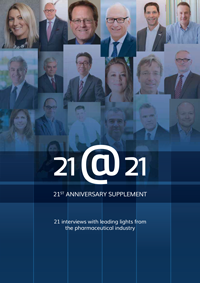Rapid testing methods: the cost-effective safety solution
Posted: 4 January 2018 | Dr Lynne Murdoch (Wickham Laboratories) | No comments yet
When thinking about the future of the pharmaceutical sector, it can be difficult to pinpoint a specific focus as there are a wide range of challenges that come into consideration across all stages of development and manufacturing. Dr Lynne Murdoch, Business Manager – Microbiology, Wickham Laboratories, considers some key points….


Dr Lynne Murdoch, Business Manager –
Microbiology, Wickham Laboratories
Many companies are facing an increased demand to get products to market more quickly while, at the same time, facing internal pressure to cut costs during the development life cycle. Regardless of any aim to cut costs, quality control at all stages of the product life cycle is vital given that contamination, microbiological or otherwise, is a key safety concern with life-threatening consequences if not taken seriously.
[insert_php] if ( zmember_valid_subscription() ) { echo ‘
DOWNLOAD THE ENTIRE 21st ANNIVERSARY SUPPLEMENT NOW
‘ ; } else { echo ‘
DOWNLOAD 21 @ 21 SUPPLEMENT PDF – SUBSCRIBE FREE (OR LOGIN)


Not yet a subscriber? Join our growing community of thousands of industry professionals and gain access to:
- Bi-monthly issues in print and/or digital format
- Case studies, whitepapers, webinars and industry-leading content
- Breaking news and features
- Our extensive online archive of over 8,500 articles and past issues
- …and it’s all free!
‘; } [/insert_php]
Recently, there have been many stories about Burkholderia cepacia contamination in the water used in manufacturing across various global sites. And it is evident that these considerations must not be taken lightly as the impact can be devastating to end users and the companies involved in the product life cycle.
Contaminants such as these can result in production stopping, which can have a knock-on effect on product supply or, in the worst-case scenario, lead to concerns about customer safety where contaminated product has already entered the market. So how do we balance the focus on cost reduction with the pressure to bring products to market quickly – and most importantly, safely?
Some of the newer rapid sterility tests coming to market can be completed in as few as seven days, halving the required time to produce these vital results
From our perspective, this is through the introduction of rapid testing methods. This is not a quick fix, as implementing new methods can be complicated. However, while validation can be a lengthy process, once it’s completed, these rapid tests deliver results much more quickly – a key benefit to an industry looking for shorter turnaround times. One area we see that would benefit most from this is sterility testing – after all, the traditional sterility test has a 14-day incubation period not including the review and reporting of results. In addition, receiving results that can be used for product release can take even longer if there are issues in testing that require further investigation. This delay can affect the release of product and is of particular concern in parametric release where the product may enter the market before test results, proving no contamination has been confirmed. Some of the newer rapid sterility tests coming to market can be completed in as few as seven days, halving the required time to produce these vital results.
Certain areas of microbiology have already been more successful in introducing rapid methods. For example, microbial identification, where the matrix-assisted light desorption ionisation time of flight mass spectrometry (MALDI-ToF) method has become more common in recent years.
On the whole, though, these rapid methods have not been widely adopted in the industry due, in no small part, to the necessary regulatory guidelines governing the development and manufacture of all pharmaceutical products. Any new method must, of course, show evidence that it is more effective, or at a minimum as effective, as the currently validated test. However, despite these extensive validation requirements, it is evident that regulatory bodies would welcome more robust, sensitive and timely tests to prevent the devastating effects of pharmaceutical contamination.
Looking ahead, we anticipate that these rapid methods will come into their own alongside the traditional microbiology suite of tests. But ultimately, the onus is on those of us relying on these quality control tests to work together with regulators and take the first steps toward that future.
Issue
Related topics
Manufacturing, Mass Spectrometry, Microbiology, Production, Regulation & Legislation, Research & Development (R&D)









